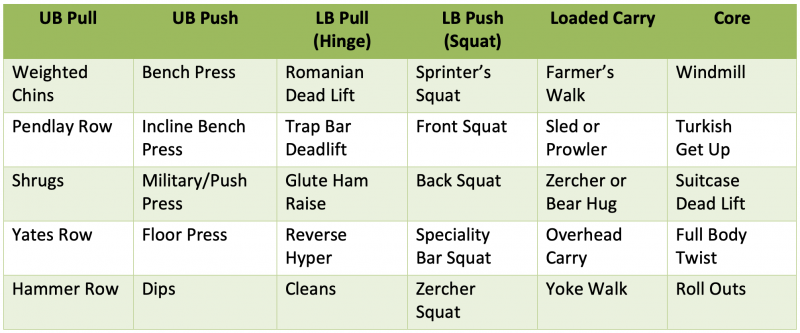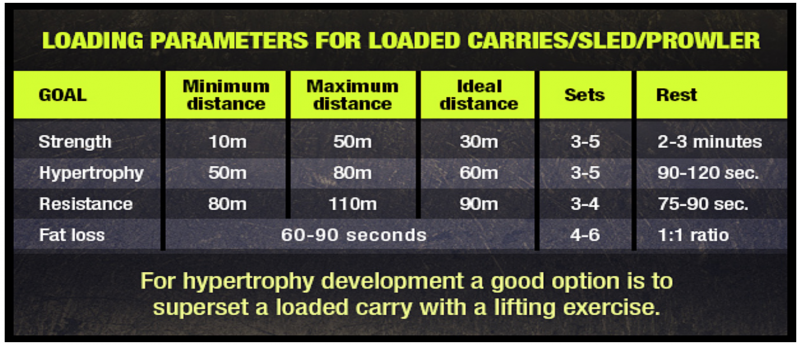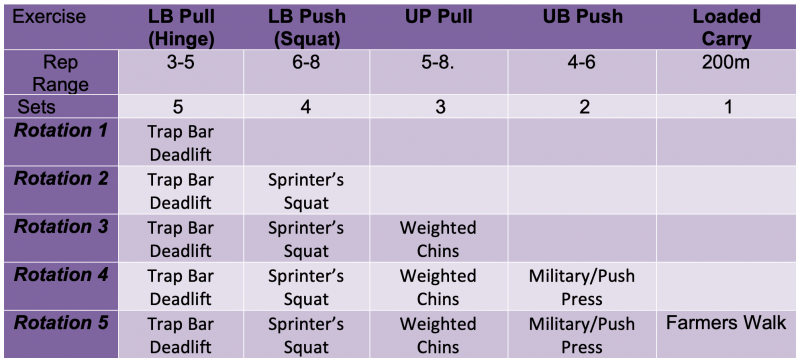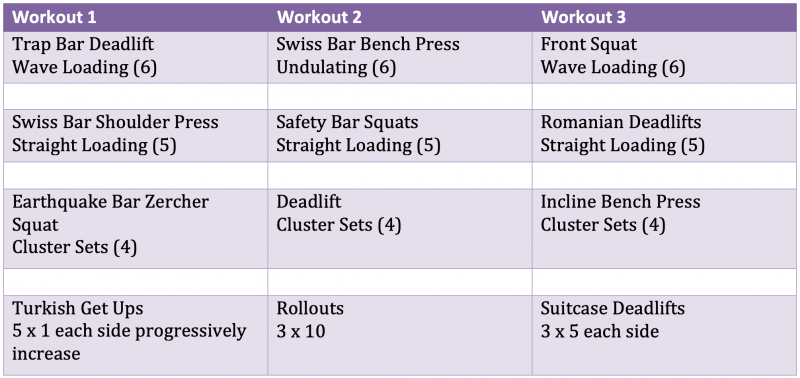
Many years ago a great friend, Peter Harding, coined the phrase, “Complicate to Profit,” and some 30 years on, I still fully believe in his words, and hence, it is what I am proposing in this article.
I recently purchased the entire Dan John collection and read them in an afternoon, which then prompted me to re-read Bill Starr’s classic, The Strongest Shall Survive. This experience strengthened my resolve to promote what I am terming the Simplicity Project.
By simplicity, I am referring to a minimalist approach to the programming of weight training by getting a maximum effect for the fewest number of exercises by utilizing a full body program performed three days a week.
RECENT: Minimal Effective Dose and the Search for Magic Bullets
I want to challenge you all to give this a try for a period of no less than six weeks, then let me know how you have faired in this style of programming, no matter what your goal of training, I know in my heart that you will improve.
In deference to Dan John, but also keeping true to Bill Starr, I will have three different programs in place with three, four, or five exercises each session plus a core movement. You could even rotate them throughout a given week or do blocks of each over the six-week period.
Style 1
Two weeks on each.
Style 2
Full six weeks.
Style 3
Choice of three, four, or five and stay with that for six weeks.
The exercises you choose for each session will be in the following format, with a core movement in each session as well:
- Three exercises: Pull, Push, Squat
- Four exercises: UB Pull, UB Push, Squat (LB Push), Hinge (LB Pull)
- Five exercises: UB Pull, UB Push, Squat (LB Push), Hinge (LB Pull), Loaded Carry
The first thing you need to do is to do an inventory of the available equipment that you have in your training environment and then list all the exercises in each of the categories suggested above that you are technically proficient in. Following on from that, I suggest you then cull this overall listing to five or six movements in each category that you have used previously and that you know you will get good gains in each movement for the time invested, your overall “Bang for Your Buck” movements.
Allow me the poetic license to do this in advance for you:
Next, you will need to list your most productive loading methodology. I like to have a selection of different number of set protocols so I can rotate through over a period of time. For example: If I am using the three-exercise workout over the course of a week, I will ensure that each exercise gets all three loading methods by prioritizing them in order of completion.
Here are my favourite protocols based around 4, 5, or 6 sets:
Wave Loading (6 sets)
- Week 1: 2 x (6/5/4) @ (75%, 80%, 85%)
- Week 2: 2 x (5/4/3) @ (80%, 85%, 90%)
- Week 3: 2 x (4/3/2) @ (85%, 90%, 95%)
Undulating Loading (6 sets)
- Week 1: 6 x 6 @ 75%
- Week 2: 6 x 4 @ 85%
- Week 3: 6 x 5 @ 80%
- Week 4: 6 x 3 @ 90%
Straight Loading (5 sets)
- Week 1: 5 x 5 @ 80%
- Week 2: 2 x 5, 3 x 3
- Week 3: 5, 4, 3, 2, 1
Clusters (4 sets)
- Week 1: 4 x 3/3 with 20 seconds in between each
- Week 2: 4 x 2/2/2 with 20 seconds in between each
- Week 3: 4 x 1/1/1/1/1/1 with 20-30 seconds in between each
If you are using the four or five exercises daily variation, you can still use this method, just vary your priority on each training day, but always keep the loaded carry as the last movement since it has the highest metabolic cost.
A general rule of thumb for the loaded carries comes from an article in T-Nation as per the graphic below, depending on the priority of your training goal.
Another method if you are finding time tight is to place all of the movements except the core, which will be done at the conclusion into a Progressive Circuit, which was originally given to me by Damian Marsh, and is a great way to get the job done in a very efficient way via circuit training.
I have found this method to be extremely beneficial done just one day a week within the three-day program. In this program, I advise resting 30 to 60 seconds at the end of each rotation and minimal rest between each exercise in a rotation, so to place this in the week plan:
Now to give you a complete program example to use as a template:
Three exercise program, three days a week on non-consecutive days
I look forward to hearing how successful you have been during the Simplicity Project.



















Regards Matt
Workout 1
A Power Clean 5 x 5 Step Load
B Back Squat 4 x 6 75%
C1 Bench Press 2 x (6/5/4) 75/80/85%
C2 Chins 1,2,3 X 3 80%
D Shoulder Tri-Set 3 x 10
Workout 2 %
A Snatch Grip DL 2 x (6/5/4) 75/80/85%
B Front Squat 5 x 5 Step Load
C1 Incline Bench Press 4 x 6 75%
C2 BOR 4 x 6 75%
D 1/2 Kneel Woodchop 3 x 5
Workout 3 %
A RDL 4 x 6 75%
B RFE 2 x (6/5/4) 75/80/85%
C1 Push Press 5 x 5 Step Load
C2 Seated Row 5 x 5 Step Load
D Pull Over 3 x 5
Would it be feasible to block these out beginning with the least neurological demanding exercises, progressing to something more neurologically demanding?
EX:
I suck at at front squats, so, perhaps using beltless front squats in my first three week block, progressing to beltless high bar squats... all the way to say; Low bar Squats with belt and knee wraps? The upward trend of efficiency in each movement would ensure progressive overload over multiple training periods.
Or... am I way overthinking this? :).
Thanks.